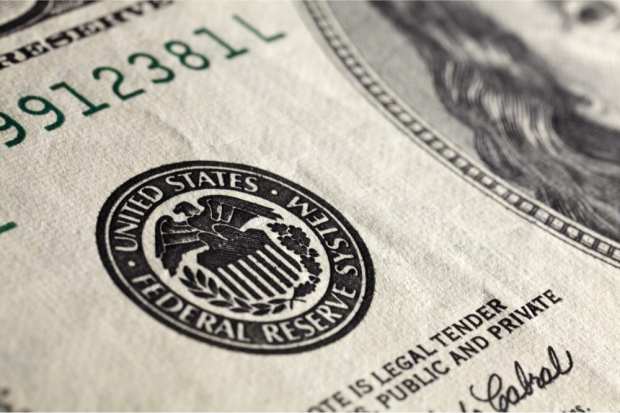Fed Says America Needs Instant Payments As Soon As Possible

For the Federal Reserve, real-time payments will take time — three or four years’ time, to be specific.
Federal Reserve Board members this week shed some light on the timing and mechanics of FedNow — an always-on, fully interoperable interbank-settlement service that will give rise to instant payments in the United States. If all goes as planned, that is.
In a Thursday (Aug. 6) symposium highlighting the Fed’s approval of the FedNow system, Fed Gov. Lael Brainard said the coronavirus crisis has heightened the need for instant payments.
“The COVID-19 pandemic is taking a tremendous toll on communities across America,” Brainard said. “Instant payments will enable millions of American households and small businesses to get instant access to funds, rather than waiting days for checks to clear.”
The Fed is defining instant payments as a subset of payments in which an end user receives funds in near real time, with immediate interbank settlement of the payment also having occurred.
The most recent details on FedNow come roughly a year after the central bank announced its plans to build and operate real-time rails.
As for a time frame for launching the new system, Fed officials said in a webcast detailing the particulars that FedNow would debut in 2023 or 2024 and would take a phased approach to implementation.
A Liquidity Boost?
Drilling down a bit into why real-time payments are taking on more urgency for retailers, Brainard said research showed that households “with the least liquid resources” — marked by relatively lower income and savings — boosted their spending starting on the day they received emergency-relief payments. That increased spending then continued for the following 10 days.
She said rapid access to funds would be useful for those living on fixed incomes or paycheck to paycheck (about 60 percent of consumers, as estimated by PYMNTS’ research).
FedNow Will Augment Private Systems, Not Replace Them
Brainard, Kansas City Fed President Esther George and Boston Fed First Vice President Kenneth Montgomery also noted that the FedNow system will provide another option in a landscape already populated by, for example, The Clearing House Payments Co. Clearing House has the RTP network.
The Fed panelists said offering FedNow alongside private-sector offerings will give banks some redundancy, and thus resiliency. The effort’s initial focus will be on P2P payments tied to bank account numbers or phone numbers.
However, Kansas City Fed chief George said the system will initially focus on domestic movement of money and won’t include cross-border transactions. But Brainard added that FedNow will be “broadly accessible” to financial institutions, businesses and consumers through direct connections with more than 10,000 banks.
She said that broad access will also come with interoperability, as the Fed will use the widely accepted ISO 20022 messaging standard to help route payments through FedNow or other payment services.
As Karen Webster noted last year in a column just after FedNow was announced, the real-time payments space is a crowded one, especially as measured in the number of private-sector providers. After all, as Webster wrote, gig economy workers hustling with Uber and Lyft can get instant payments into their checking accounts, and several payroll providers give workers access to wages earned in real time.
At Thursday’s symposium, Brainard said the Fed is “open to collaborating on an alternate form of interoperability, whereby messages would be exchanged directly between the FedNow service and the private sector service instant payment operators.”
That approach, she said, would be similar to the one that underpins ACH payments. It would also support, eventually, alias-based payments after launch. That’s where parties sending and receiving funds can use email addresses or phone numbers rather than account numbers. (Or as George noted, a directory service that might be introduced after launch.)
Combatting Fraud — And Addressing Competition And Costs
In answering questions submitted to the trio, George, Brainard and Montgomery said the Fed’s phased-launch approach will offer a number of core features, including robust efforts to combat fraud. That will include allowing banks to set various transaction limits.
“Participating banks will have the ability to set lower value limits for their transactions … and the ability to specify certain conditions under which transactions would be protected, say by an account number,” Montgomery said. He added that the service will provide additional reporting and messaging features as implementation takes shape.
With a nod toward the competitive landscape — and a question as to whether FedNow could conceivably by replaced by, say, Facebook-backed Libra or central-bank digital currencies — Brainard said, “We’ve certainly seen a tremendous pace of innovation in the payments arena efforts by global stable coin networks.”
But she added that such innovation has raised “fundamental questions” about legal and regulatory safeguards. She noted that given the dollar’s continued role on the global stage, “it’s important for us as America’s central bank to remain on the frontier of research and policy development regarding central bank digital currency.”
George said input from industry stakeholders has pointed to the fact that “we need this service quickly. … We are going to get the baseline infrastructure out there as quickly as we can.”
Brainard added that instant payments must reach a broad swath of Americans, including gig economy workers, people who are “tightly managing cash flows” and underbanked populations. Partnerships across the industry would allow additional service providers to work with banks (such as CDFI banks) to bring instant payments to those populations.
As for cost of implementation, George said that while the “cost issue is important, we don’t have a number right now because we are still in the process of setting our technology strategy.”
